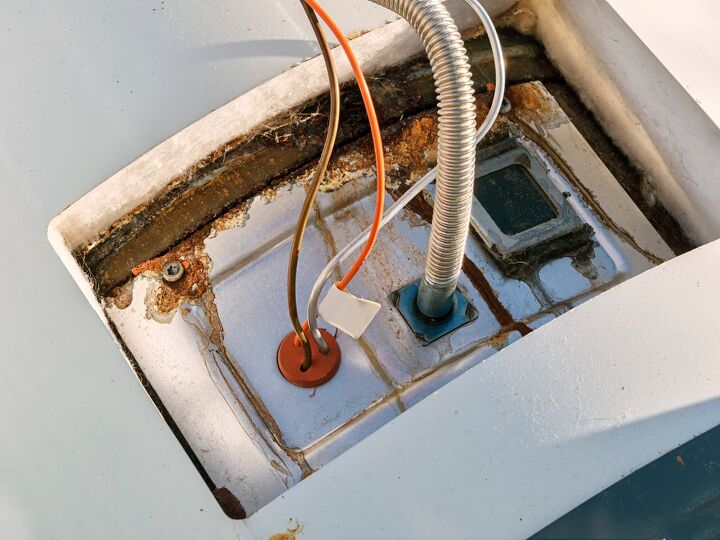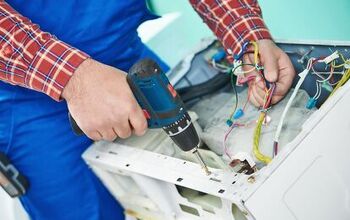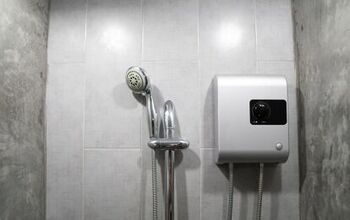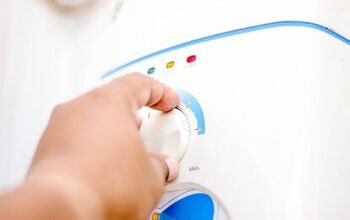What Size Wire For A Hot Water Heater? (Find Out Now!)

Having to replace a water heater is rarely ever a fun endeavor. They certainly are not cheap, especially when you factor in things like service and installation. So, it may make more sense to want to do the install yourself. But there are important to be asked. One of which is “what size wire is needed for an electric water heater?”
Whatever you do, get a wire that is larger than whatever the current requirement. So, if a 20-amp water heater would require a 12-gauge wire, go to a 10-gauge wire. If you have a 25-amp water heater, which requires a 10-gauge wire, you will need an 8-gauge wire. And so on.
Do You Need Water Heater Repair Services?
Get free, zero-commitment quotes from pro contractors near you.

What Are The Wire Size Requirements For A Water Heater?
Now that we know the voltage and power requirements, we can determine the wire gauge that we for the installation. You want to make sure that you wire your hot water heater with a size that is meant to accommodate the current requirements.
First, determine the wire size. So, for a 20-amp hot water heater, you would want to go with a 12-gauge wire. For a 25-amp hot water heater, you would need a 10-gauge wire. Something in the 30- to 40-amp range would require an 8-gauge wire.
When you make your wire size determination, go up to the next size. So, the 20-amp hot water heater would use a 10-gauge wire instead of the 12-gauge. Continue down the line, going up to the next size on the list.
Water Heater Wiring
You can’t just use any old wire when installing your electric water heater. There are specific codes to follow, namely from the National Electrical Code. The Code specifies what the required circuit breaker sizes and wire gauge sizes are. Everything is based on the current draw for the hot water heater.
Not only do you need to know the right wiring, but you will likely need to get a permit, too. Most residential areas require a permit whether the installation is done by you or a professional. The work is reviewed by an inspector as part of the process, ensuring that everything has been done to current safety standards and local code requirements.
Getting To Know Your Water Heater
This pertains to electric water heaters, obviously, but there is a bit more information to know before you initiate the installation.
You should know about the voltage requirements, power requirements, and the most common wire gauge and current sizes before proceeding.
Voltage Requirements
For the most part, electric water heaters that you encounter will have either a 220- or 250-volt AC. In your home, the voltage would require a double circuit breaker. That breaker should be rated for the amperage draw of that water heater.
Given the complexity of the requirements as well as the potentially dangerous hazards, it is always recommended that you go with a professional instead of a DIY installation. Not only do they have the knowledge and experience to get the job done, but they have the insurance, too.
Power Requirements
Most residential water heaters can vary in the amount of power that they use. The amount of power your water heater uses depends on the size of the heating element. The power for your water heater is given in watts.
So, all of this means that the wire gauge size you need comes down to the amps being drawn by the water heater. To find your amperage, you need to divide the wattage by the voltage. These numbers will come in handy when determining wire gauge size.
Can You Install An Electric Water Heater?
The very short answer to the question is, “yes”, you can perform the installation yourself. However, it is imperative that you know not only things like voltage and wire gauge but follow best practices when installing.
Part of the reason why going with a professional is that they have the knowledge and experience to do the job safely and quickly. If you plan on proceeding anyway, then there are a few things worth keeping in mind.
Safety First
Whenever you are dealing with electrical currents, safety should be paramount. It might sound like common sense, but make sure that you turn the power off before touching or examining any of the electrical connections or wiring.
For the most part, your water heater will be served by a 30-amp, double-pole circuit breaker. Make sure that you switch off the right breaker within the breaker box. Even after doing this, use a voltage tester to ensure that the circuit is off and there is no power going to the water heater.
Find out if you can use 12/2 wire for lights.
Finding the Electrical Connections
Now that the power is off, you need to find the electrical connections for your water heater. These are made at a junction box that is built into the top of the water heater. They should be enclosed by some type of cover plate which can generally be removed so that you can see inside the connections.
Most wire conductors that lead into the water heater are enclosed. They are enclosed using a flexible metal cable, like metal-clad cable, or some kind of other flexible conduit. The flexibility is meant to provide a little bit of wiggle room, which makes it easier to replace your water heater. In areas prone to earthquakes, that extra flexibility is a required feature.
Testing the Connections
When you have located the junction box, you will need to first remove the cover plate. When you have successfully done so, you can then test the junction box for electrical activity. Remember that there is no such thing as “too safe” when dealing with electrical connections.
Use a non-contact voltage tester; you can hold them right up next to the wire connections. If you managed to shut the circuit off properly, then the tester should not light up. Should it light up, go back and verify that you got the right breaker.
The Junction Box Wiring
Most electric water heaters require a 220- or 240-volt dedicated circuit. That means that the circuit is meant to serve just the water heater and no other device or appliance. Typically, you are looking at a 30-amp double-pole breaker for water heaters.
The cable requirements may vary but you will more than likely be looking at 10-2 nonmetallic or MC cable. Look at the wiring; the black should connect to the black wire lead. The white circuit wire, meanwhile, may connect to a white or red wire lead.
That white circuit wire should have electrical tape around it near both ends of the circuit connection. This is to indicate that it is the hot wire, not the neutral wire. The ground wires are needed for the elevated voltage.
Do You Need Water Heater Repair Services?
Get free, zero-commitment quotes from pro contractors near you.

Heating Element Wiring
You generally won’t have to deal with the heating element or thermostat during the average electric water heater replacement. Still, it’s helpful to know that most electric water heaters have an inner wire that runs out from the wire connection box.
These wires run down into a pair of heating elements, each of which has its own thermostat control. Both the heating elements and the thermostats are kept within access panels that are mounted on either side of the water heater.
Unless you are replacing the heating element or thermostat on the existing water heater, leave these alone. They are far more difficult to replace and will likely require professional intervention to do the job properly. Don’t risk it by implementing a DIY fix.
What Wire Is Used For An Electric Water Heater?
A separate 30-amp, the 240-volt breaker is often required for electric hot water heaters. A 10/2 Romex cable will normally supply power from the breaker panel to your water heater.
What Size Breaker And Wire Do You Need For A 40-Gallon Water Heater?
What Happens If You Wire A Water Heater Wrong?
Related Articles

Ryan Womeldorf has more than a decade of experience writing. He loves to blog about construction, plumbing, and other home topics. Ryan also loves hockey and a lifelong Buffalo sports fan.
More by Ryan Womeldorf



























